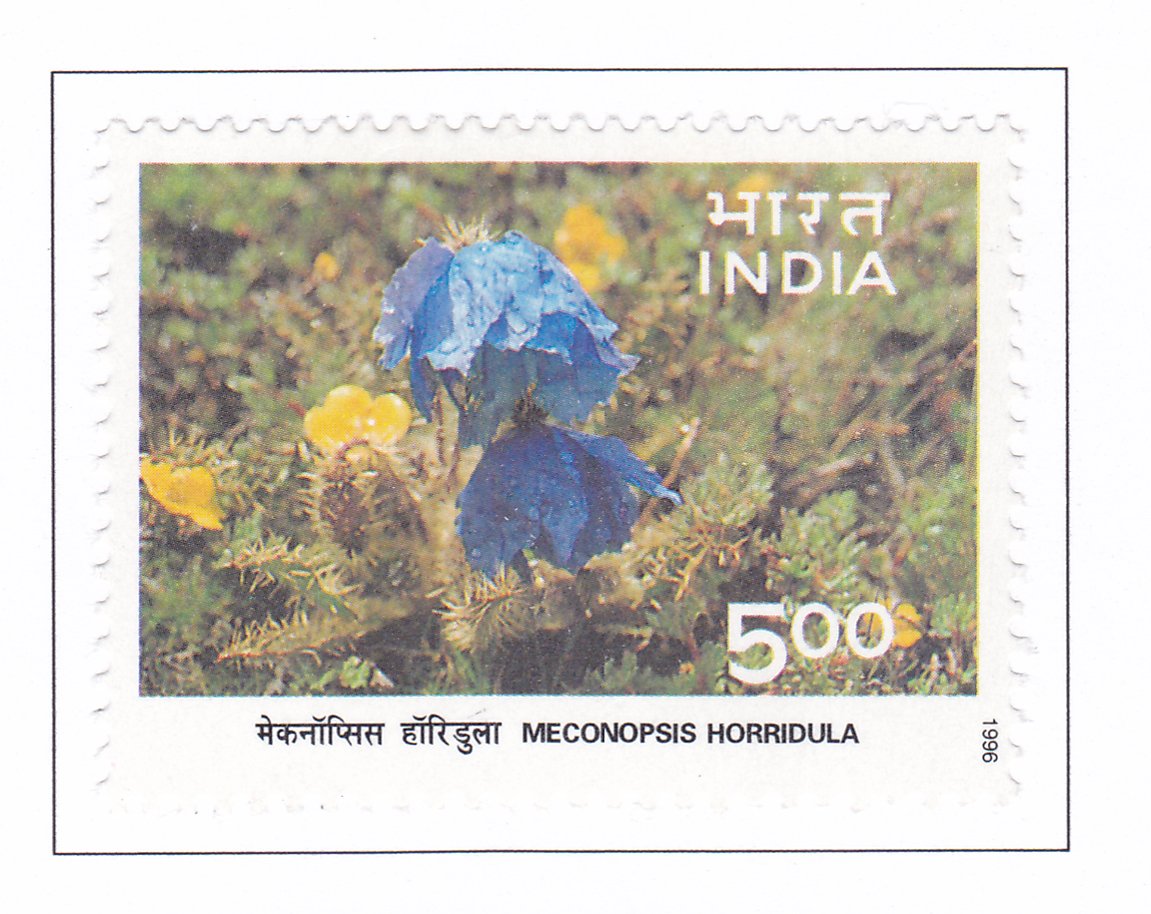Himalayan Ecology – Meconopsis horridula

Technical Data
| Stamp Set | Himalayan Ecology |
|---|---|
| Date of Issue | May 10, 1996 |
| Denomination | Rs. 5 |
| Quantity | 1,000,000 |
| Perforation | comb 13½ x 13¼ |
| Printer | Security Printing Press, Nashik |
| Watermark | No Watermark |
| Colors | Multicolor |
| Catalog Codes |
Michel IN 1504I Stamp Number IN 1564 Yvert et Tellier IN 1301H Stanley Gibbons IN 1666 |
| Themes | Flowers | Plants (Flora) |
Table of Contents
Himalayan Ecology
The Himalayan mountain range’s unique ecological features are celebrated in this special postage stamp series by India Post. Here’s a detailed description of the fourth stamp in the series:
Meconopsis horridula (Himalayan Poppy)
- Description:
- Appearance: The Himalayan Poppy, named for its Greek roots “mekon” (poppy) and “opsis” (like), is characterized by its deep azure blue flowers and its bristled, somewhat fierce appearance, reflected in the name “horridula.”
- Habitat: It thrives in open stony areas at elevations of 4500 to 5500 meters in the Eastern Himalayas. The plant was photographed in late July in the Sikkim Himalayas, where it is commonly known as “Tsher Gnoin.”
- Miniature Sheet Background:
- Laspa Valley: The background of the miniature sheet features the Laspa Valley, highlighting the plant’s natural habitat.
- First Day Cover:
- Bhyundar Ganga: The first day cover depicts the Bhyundar Ganga, which originates from the Tipra glacier at the base of Rataban and Ghouri Parbat peaks. It flows through the Valley of Flowers and merges with the Alaknanda at Govind Ghat, passing through mixed temperate deciduous forests.
Significance of the Stamp
The Meconopsis horridula, with its vibrant blue flowers and unique ecological niche, is a testament to the rich biodiversity of the Himalayas. The stamp aims to draw attention to the region’s ecological importance and the need for conservation efforts to preserve its diverse and rare plant species. The depiction of this plant on the stamp serves to emphasize the delicate balance of the Himalayan ecosystem and the critical role it plays in supporting both flora and fauna.
